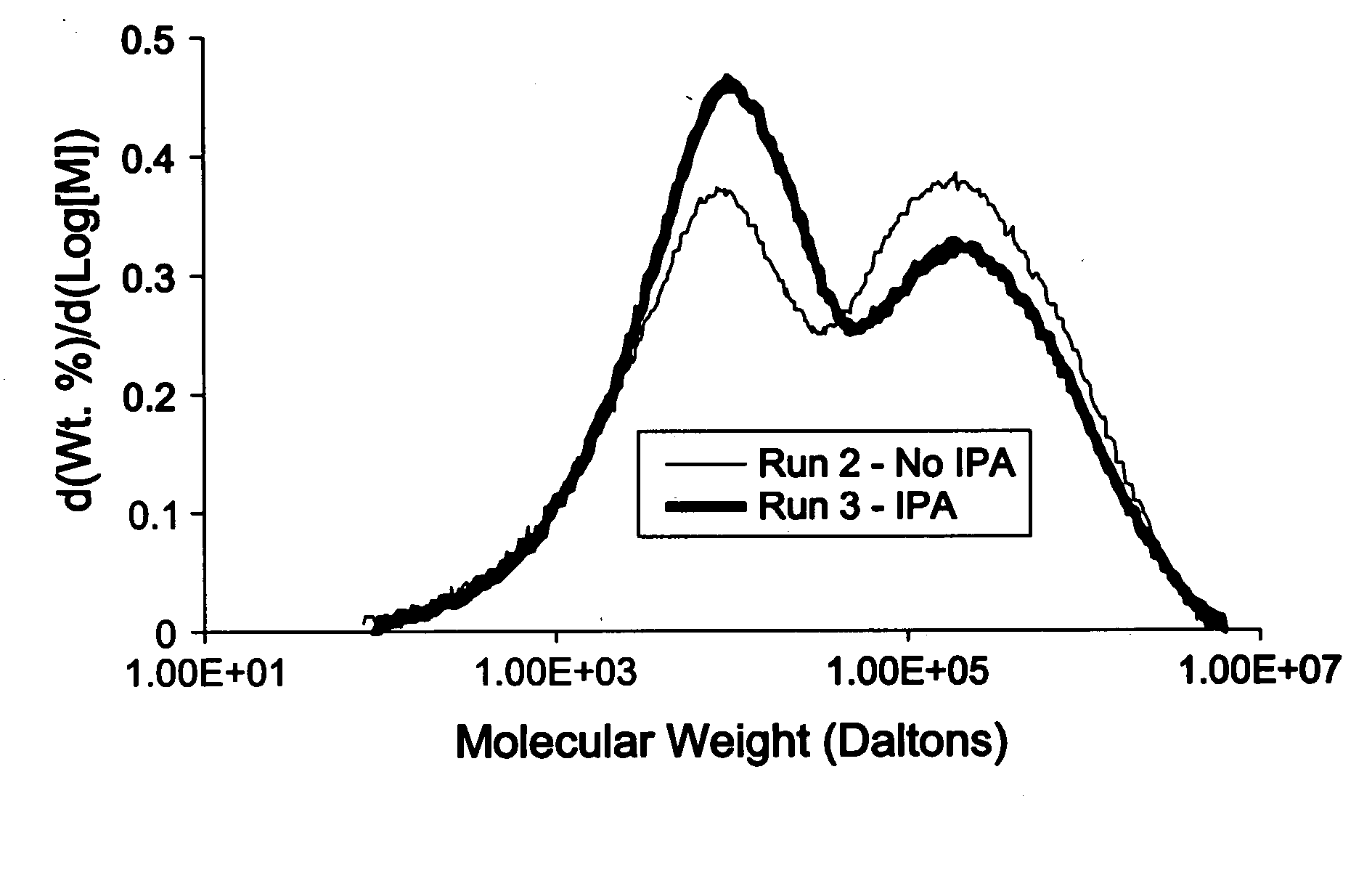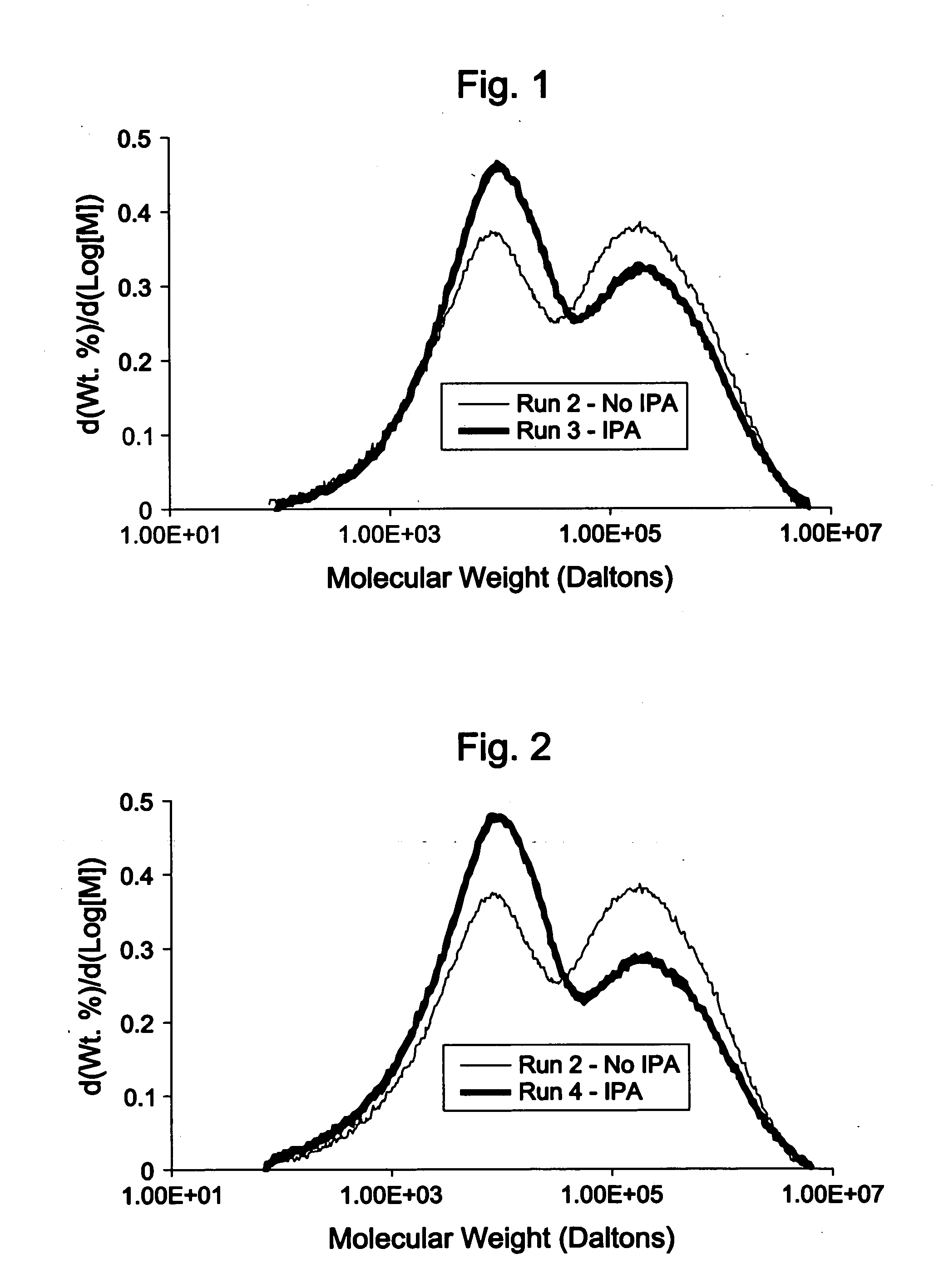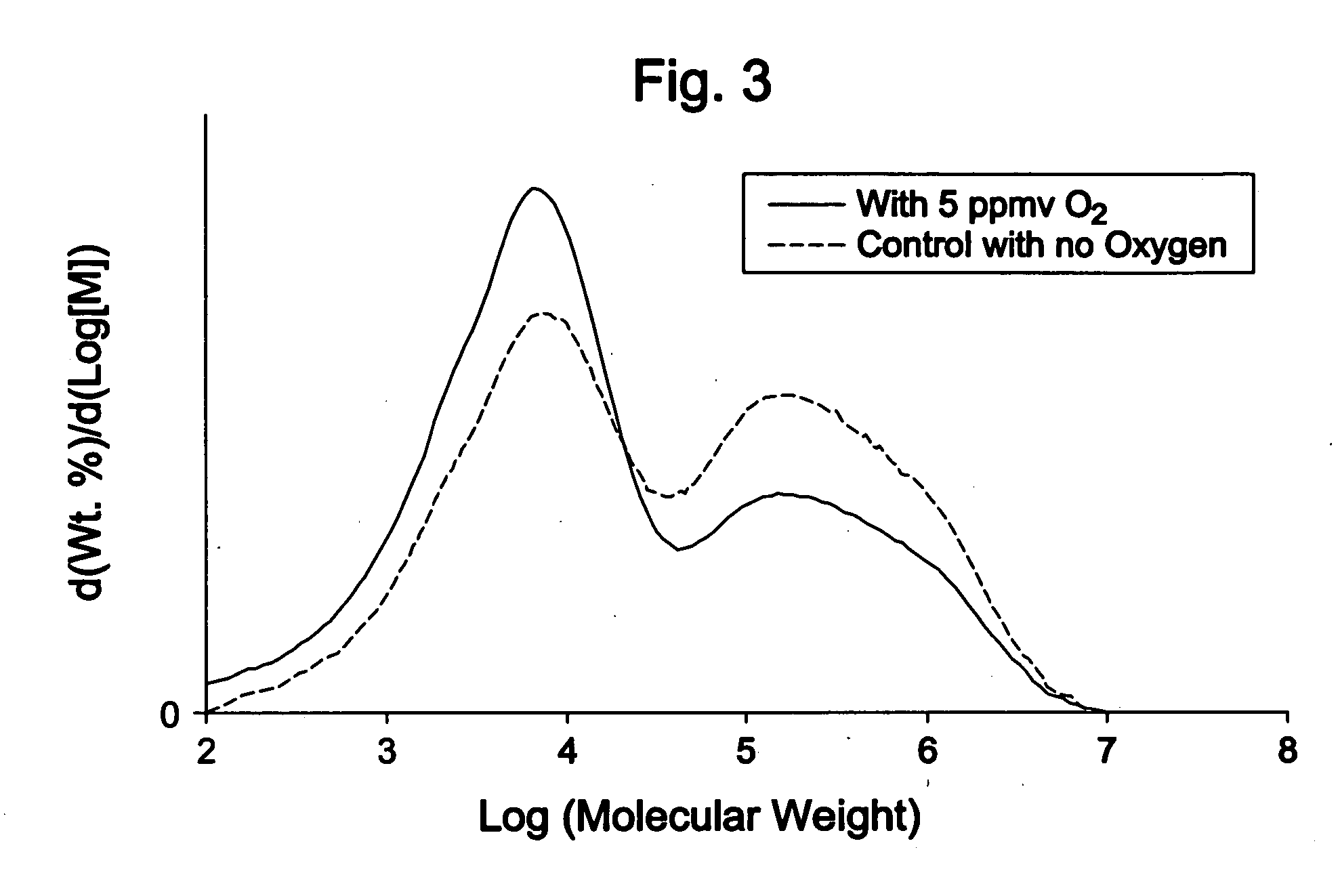Polymerization process and control of polymer composition properties
a polymerization process and composition technology, applied in the field of polymerization of olefins, can solve the problems of adding cost and complexity to the process, and achieve the effect of modifying the catalyst activity or productivity
- Summary
- Abstract
- Description
- Claims
- Application Information
AI Technical Summary
Benefits of technology
Problems solved by technology
Method used
Image
Examples
example 1
[0259] Table 1 shows a comparison between polyethylene production with and without feed of isopropyl alcohol (IPA). These runs took place sequentially on the same reactor. Runs number 1 and 2 were done using no IPA. Runs 3 and 4 included IPA feed and had much higher resin Flow Index and low-molecular-weight (LMW) polymer fraction. FIG. 1 shows the comparison between run 2 and 3, confirming presence of much more LMW polymer with IPA feed. FIG. 2 shows the comparison between run 2 and 4, again confirming presence of much more LMW polymer with IPA feed. Densities were determined as per ASTM D-105. The Mw / Mn, Mz / Mw, the Mw (weight average molecular weight) and Mn (number average molecular weight) values are as determined by gel permeation chromatography using crosslinked polystyrene columns; pore size sequence: 1 column less than 1000 Å, 3 columns of mixed 5×10(7) Å; 1,2,4-trichlorobenzene solvent at 140° C. with refractive index detection. Other test methods are as cited above.
[0260] ...
example 2
[0261] This comparative example shows the effect of oxygen feed to the recycle gas line of a different reactor than used for Example 1. Oxygen increases the amount (%) low-molecular-weight and increases polymer composition FI. In Tables 2 and 3, and FIG. 3, the amount of oxygen is referenced in terms of ppmv. In the instance of oxygen, wt ppm is essentially equivalent to wt ppm.
[0262] Table 2 shows test runs that took place sequentially on the same reactor. Run number 5 used no oxygen feed, while run number 6 used oxygen feed equivalent to 5 mole ppm based on ethylene feed rate. Resin FI changed from 11.68 dg / min in run number 5 to 68.17 dg / min in run number 6. This happened even though water feed rate decreased from 18.9 to 13.9 comparing run number 5 to run number 6. A decrease in water feed rate would normally reduce resin FI (see, for example, U.S. Pat. No. 5,525,678), but instead this example shows a major increase in FI with the oxygen feed.
[0263] The use of oxygen increased...
PUM
| Property | Measurement | Unit |
|---|---|---|
| Temperature | aaaaa | aaaaa |
| Temperature | aaaaa | aaaaa |
| Temperature | aaaaa | aaaaa |
Abstract
Description
Claims
Application Information
 Login to View More
Login to View More - Generate Ideas
- Intellectual Property
- Life Sciences
- Materials
- Tech Scout
- Unparalleled Data Quality
- Higher Quality Content
- 60% Fewer Hallucinations
Browse by: Latest US Patents, China's latest patents, Technical Efficacy Thesaurus, Application Domain, Technology Topic, Popular Technical Reports.
© 2025 PatSnap. All rights reserved.Legal|Privacy policy|Modern Slavery Act Transparency Statement|Sitemap|About US| Contact US: help@patsnap.com



